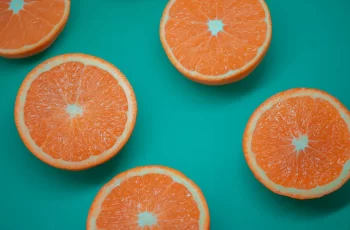
Can Niacinamide and Glycolic Acid Be Used Together?
There is a lot of noise out there about the use of different skincare ingredients, and it can be deafening at times. With promises of transparency and skin issues disappearing overnight, I wouldn’t be surprised if you threw caution to the wind and coated your skin with every product in your bedroom closet. This could cause you some problems, especially if those products contain active amounts of glycolic acid and niacinamide.
Both niacinamide and glycolic acid can have similar effects on the skin. Both improve skin texture, prevent breakouts like acne, reduce signs of aging like fine lines and wrinkles, and target areas of hyperpigmentation.
While it may seem like a good idea to use niacinamide over glycolic acid, there is one important aspect of skin care that you should always keep in mind. What I mean by this is that every product formula has a different pH level. While it may not seem important, an unbalanced pH level is often the cause of skin irritation, redness, and dryness. Different pH levels mean that the time it takes for each ingredient to absorb into the skin can vary. Sometimes it can take a few seconds, a few minutes, or even up to 30 minutes. An easy way to remember how long it takes is this: the higher the pH level, the longer it will take to absorb into the skin. Since niacinamide has a higher pH than glycolic acid, it takes longer to be absorbed into the skin, and even then, it doesn’t penetrate as deeply as glycolic acid.
If you’re still a little confused about how these ingredients work together, I’ll now answer some of the most common questions about using niacinamide and glycolic acid together.
Can I mix glycolic acid and niacinamide?
Yes, you can, but make sure you use them correctly. What I mean by this is that you should allow enough time between applying each ingredient to avoid irritation. As I mentioned before, niacinamide has a higher pH than glycolic acid and is more alkaline. Therefore, it is recommended to avoid using them simultaneously. So, for the best results, apply glycolic acid first and wait a few minutes before applying niacinamide to your face.
If you want to know more about how to mix niacinamide and glycolic acid, read our dedicated blog post.
How to Use Niacinamide and Glycolic Acid?
In order to effectively use niacinamide and glycolic acid together, you must allow enough time between applications. This not only allows the ingredients to absorb into the skin, but also allows enough time to ensure that you avoid any potential irritation. The order in which you apply your skincare products is also an important factor when using niacinamide and glycolic acid. As you probably already know, to reap the benefits and form an effective habit, you need to apply products from thinnest to thickest consistency. This means applying glycolic acid to your skin before niacinamide, as this acid is often found in products like exfoliating toners, whereas niacinamide is found in more serums and moisturizers.
What Not to Mix with Niacinamide?
Despite the fact that niacinamide is extremely moisturizing, there are some active ingredients you’ll find that you should avoid in your skincare routine. For more information, see our dedicated blog post on what not to mix with niacinamide.
What Does Glycolic Acid Pair Best With?
There are some ingredients that can be combined with glycolic acid. However, before I tell you some of the most effective combinations, check with your doctor or dermatologist to make sure the ingredients you’re putting into your skin won’t cause irritation or redness.
Glycolic and Salicylic Acid
This powerful combination of BHA and AHA is perfect for those with oily skin that’s prone to breakouts. Each acid works on a different layer of the skin, helping to clean clogged pores while removing the layer of dead skin cells on the outer surface. Together, these chemical peels can clear your skin of acne-causing impurities and give you an all-around healthy complexion.
Glycolic and Lactic Acid
Although glycolic and lactic acids belong to the same AHA family due to their different molecular sizes, they work on different areas of the skin. Lactic acid’s larger molecular size means it works on the outer surface, while glycolic acid can penetrate deeper into the skin to remove excess oil, bacteria, and impurities underneath.
Glycolic and Hyaluronic Acid
Hyaluronic acid is one of those rare ingredients that works well for all skin types. It can increase hydration by binding water to your face using its humectant properties, ensuring continuous hydration. This makes hyaluronic acid an ideal partner for glycolic acid, as it can eliminate signs of irritation or dryness that may occur when using a stronger AHA.
Here are some prime examples of ingredients that work well with glycolic acid. However, before applying any product to your skin, I recommend doing a 24 patch test on the inside of your forearm before applying to your face.
Can Niacinamide be used with AHA BHAs?
Yes, but be careful. As I mentioned before, the pH of a skincare formula plays a big role in how it reacts to the skin. The high alkaline content of niacinamide means that it takes longer to be absorbed compared to stronger acidic AHAs like glycolic acid, lactic acid, and BHAs like salicylic acid.
Can I use glycolic acid every day?
Actually yes, you can use glycolic acid every day if your skin has developed enough tolerance and is comfortable with daily use. People with normal, combination, or oily skin can benefit most from the exfoliating effects of glycolic acid. If your skin is prone to dryness, it’s best to avoid glycolic acid and opt for lactic acid or PHAs instead, as they are gentler on the skin.
Can I use a moisturizer after glycolic acid?
Of course, using a glycolic acid moisturizer can combat dryness while creating a protective barrier on the skin. This physical barrier on the outer surface of the skin prevents environmental influences from damaging or unbalancing the protective barrier.
With any luck, I’ve cleared up some of the confusion about using niacinamide and glycolic acid together now, but if you have any questions, follow us on Instagram .


